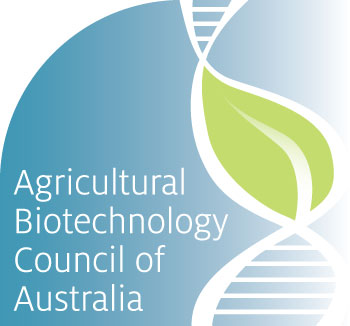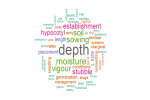Biotechnology has a critically important contribution to make as the agricultural sector produces more from less in increasingly adverse environments
New reports highlight the very real need for the agricultural sector to produce more from less in increasingly adverse environments. This will require that we leverage every tool in the toolbox to ensure our wellbeing, and biotechnology has an important contribution to make.
 Illustration: Tim Claeys
Illustration: Tim Claeys
The Food and Agriculture Organization of the United Nations (FAO) and CSIRO have written reports on our agrifood systems and the state of the climate.
The FAO report found that almost all countries identify agrifood systems as a priority for climate change adaptation (94 per cent) and mitigation (91 per cent) as part of their national climate action plans (NCAPs) under the Paris Agreement.
Agrifood systems in nationally determined contributions: Global analysis highlights the potential for agrifood systems to address climate solutions, especially as countries, including Australia, prepare to submit their third round of NCAPs in 2025.
As part of their NCAPs,88 per cent of countries report food insecurity and biodiversity loss as climate-related risks,66 per cent report climate-related impacts and risks for crop-based systems, and 50 per cent report risks to livestock, forestry, and fishery and aquaculture systems. The study identifies that agrifood systems are already bearing the financial brunt of climate-related disasters. For example, between 2007 and 2022, agriculture accounted for 23 per cent of total disaster-related losses.
The latest CSIRO State of the climate report, which is released every two years, found Australia’s weather and climate have continued to change, with an increase in extreme heat events, longer fire seasons, more intense heavy rainfall and rising sea levels.
The report states that the shift towards drier conditions between April to October across the south-west and south-east, and reduced rainfall in south-west Australia, now seems to be a permanent feature of the climate. It also noted that 2023 was the warmest year on record globally.
Climate change drives innovations
A recent climate and agriculture summit held in the US highlighted the impressive impact genome editing can have in grappling with the challenges of climate change.
Jennifer Doudna, the Nobel Prize-winning biochemistry professor at the University of California, Berkeley, is one of the inventors of the breakthrough gene-editing tool CRISPR. She founded the Innovation Genomics Institute (IGI), which hosted the event Inside IGI Climate 2024.
Among other projects, the IGI is using gene editing in commensal soil microbes to boost their carbon storage potential. Rice and sorghum are the early targets of their research.
Gene editing is driving a wealth of innovations in this. Some interesting examples of gene editing solutions to the challenges of climate change include:
- US Food and Drug Administration-approved cattle with shorter coats better suited to hotter temperatures;
- maize with shorter, stronger stalks that could reduce crop losses during increasingly powerful storms;
- novel cover crops that can help sequester more carbon dioxide that can be used as animal feed or to produce biofuels; and
- animals that can better resist the climate-driven spread of zoonotic diseases.
Closer to home, we can be proud that Australian research continues to be at the forefront of developments in grain crops adapted to climate change.
Molecular farming milestones
A molecular farming company based in the US has harvested its first large-scale crop of soybeans containing casein proteins.
Casein is the dairy protein that makes cheese melt and stretch. Alpine Bio, founded as Alpine Roads in 2016, plans to launch cheeses featuring animal-free casein. It is on track to achieve this after successfully genetically modifying soybeans to produce casein protein.
This is just the first step. Startup companies across the globe are rapidly leveraging the power of molecular farming.
The most advanced molecular farming products in the pipeline are those developed by Moolec Science.
In 2023, GLASO, a high-GLA (gamma-linolenic acid) safflower oil product, and in 2024, Piggy Sooy, a genetically modified soybean expressing pig proteins, received regulatory clearance from the US Department of Agriculture’s Animal and Plant Health Inspection Service.
Vow, an Australian company, has also recently announced the development of Forged Gras, a cultured foie gras. These techniques are allowing high-value and niche products to be developed with a fraction of the water and land usage and carbon dioxide emissions while removing potentially risky or problematic production methods.
 Photo: ABCA
Photo: ABCA
The Agricultural Biotechnology Council of Australia is an industry initiative established to increase public awareness of, and encourage informed debate and decision-making about, gene technology. The initiative is supported by a number of agricultural sectors and organisations all working to ensure the Australian farming sector can appropriately access and adopt this technology for the benefit of Australian agriculture.

























































